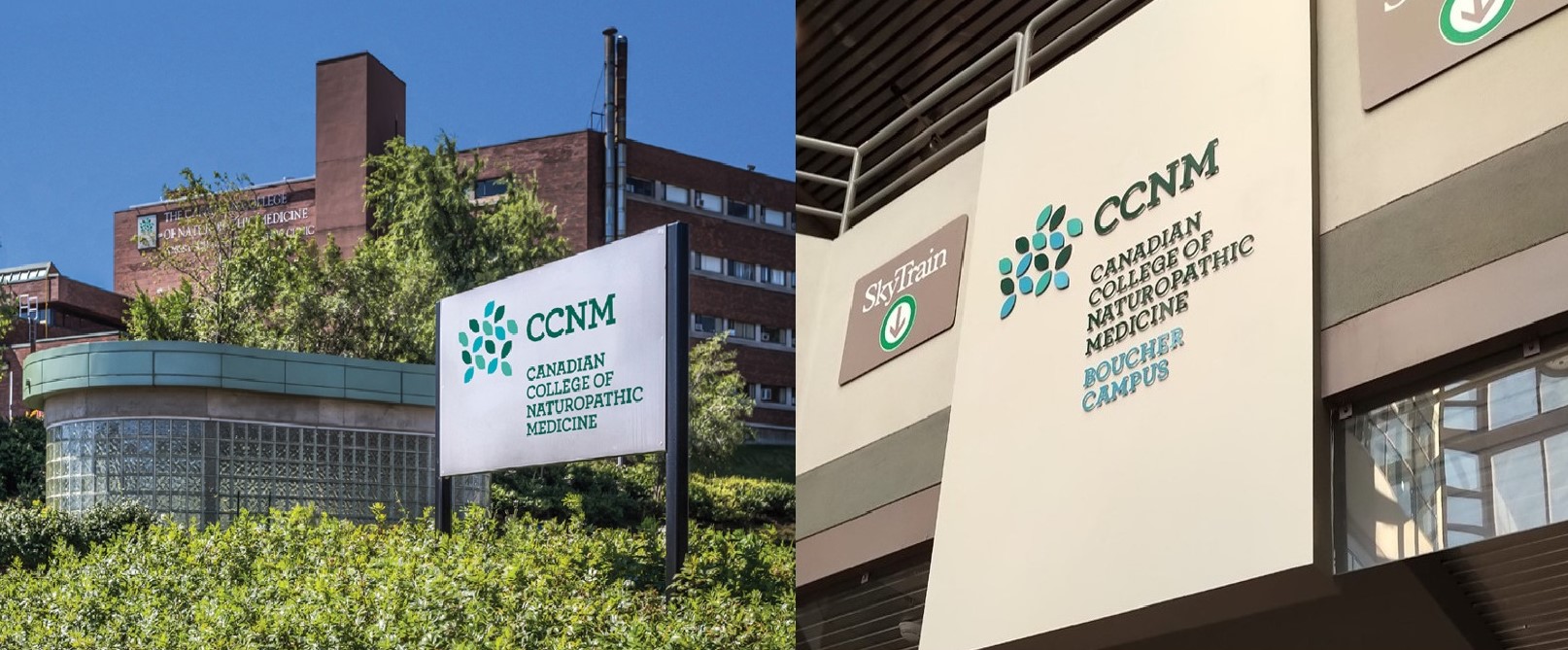Latest News

This month, we had the opportunity to interview Dr. Rahim Karim, DC, MBA, CHE, ICD.D, President and CEO of the Canadian College of Naturopathic Medicine (CCNM). We talked CCNM updates, changes in faculty development, and what institutional membership has in store for them.
Q: We’re delighted to have the CCNM as part of our Institutional Membership! Could you tell us more about the CCNM and some of your current strategic priorities?
The Canadian College of Naturopathic Medicine (CCNM) is a pan-Canadian educational institution with campuses in Toronto and Metro Vancouver. We provide a full-time, four-year naturopathic medicine program and a two-year naturopathic bridge delivery for internationally trained medical professionals. Our graduates are eligible for licensure in all regulated provincial and state jurisdictions. This year, CCNM is celebrating 45 years of providing valuable, high-quality naturopathic education to our students.
Naturopathic doctors are viewed as partners in the health-care ecosystem. For example, many of our graduates work alongside allied and complementary health-care providers in integrative settings to provide a fulsome, individualized approach to patient care. Our graduates may also choose to pursue careers in public policy, administration, education, research or become private practitioners.
We have a comprehensive strategic approach – what we call the 5P Framework – that serves as our North Star to drive our objectives and actions.
Here is a brief summary of the 5P Framework:
Partnerships build and broaden our relationships with academic institutions, government, industry, community, professional associations, sector, and international partners.
Programming ensures that our curriculum is innovative, relevant, flexible, evidence-based, practice-focused, and enriched by facilities and technology.
Practice enhances and supports excellence and innovation in clinical services, research, and scholarship.
Participation ensures the well-being, engagement, and success of our students and employees.
Planning relates to enhancing financial sustainability, strategic enrolment management, and developing new growth-focused initiatives.
Much like the holistic treatment approaches that NDs use in clinical care to support the whole person, each of the 5Ps is intended to be interwoven, connected, and complementary to support a growing, healthy institution.
To put it more simply, we are one institution, two campuses, and one team. More information about us and how we are achieving our goals can be found at ccnm.edu.
Q: Given your long history in the healthcare education sector, what new changes/shifts have you seen in HPE faculty development?
I would like to touch upon three areas of advancements in health professional education and its alignment with faculty development activities.
The first is that we are seeing more integration within curriculum, which is an acknowledgement and response to the increasing complexity in the wider health-care environment. At CCNM, integration manifests in a few important ways: our faculty are now teaching in a manner that purposefully removes the silos between the various subjects that students learn, so the resulting educational experience is balanced and knits together the modalities they may use as licensed naturopathic doctors. Additionally, socialization is a vital aspect of integration. From their first term, students act as a secondary shadow at our teaching clinics which helps them to develop the empathetic and patient-centered mindset required of health-care practitioners.
The second is the growth of interprofessional opportunities. Interprofessionalism broadens the understanding of the roles and responsibilities of other health providers, improves communication and collaborative skills, and ultimately provide more effective, whole-person patient care.
The last shift, but certainly not the least, is the rise in experiential learning. This represents a move away from the lecture format to a work integrated educational model. In terms of naturopathic medical training, experiential learning provides more opportunities for students to take an active role in their education. Therefore, an increase in patient simulations, participating in community based clinical care, and regular, hands-on practical sessions allow students to develop critical problem-solving skills and confidently apply their knowledge in real-world settings.
These shifts involve learning about new pedagogies including incorporating new methods of teaching and learning as part of continued faculty development.
Q: What is something happening at CCNM Education portfolio that you are particularly proud of?
I take immense pride in our innovative case-based curriculum, introduced to CCNM’s first-year students in September 2022. This curriculum is meticulously designed to empower our students with cutting-edge knowledge, increased clinical access, and advanced skills to shape them into successful naturopathic doctors who are then able to make significant contributions to both the profession and the broader community.
CCNM provides students with extensive exposure to increasingly complex theory in biomedical sciences, clinical medicine, naturopathic therapeutics, and the art and practice of naturopathic medicine. Clinical education is a hallmark of the naturopathic professional program, allowing for direct and indirect patient management starting early in the program.
Other features of CCNM’s case-based curriculum include:
- Learning activities that incorporate in-person instruction, practicums, asynchronous structured learning experiences, and online delivery.
- A case-based design that aligns curriculum content of each course, providing structure and orientation.
- Curricular integration featuring six larger umbrella courses, with each acting as a synthesis of curricula from smaller, more specific disciplines.
- Elective content that enables students to personalize their educational experience with in-depth studies into a particular area of focus.
- Clinic education that starts earlier in the program to highlight the connection between theory and practice, and explore clinical issues in a deep and reflective manner over four years.
Q: CCNM recently became an Institutional Member at the CFD. What does this collaboration and connection with the CFD mean to you?
We appreciate this partnership that allows our faculty to further engage within the health-care sector. The opportunity to participate in workshops, communities of practice, events, rounds, and other programming gives our faculty new learning options and the chance to collaborate and share ideas with other health-care providers from the educational field.
It is also more than that. Being a member of this community of educators is such a crucial component of what we strive to achieve at CCNM. A large part of what makes CCNM special and successful is the human connection, and my hope is that our faculty will have opportunities to grow with the wider CFD community and form lasting relationships as they have at CCNM.
See all Latest News.
